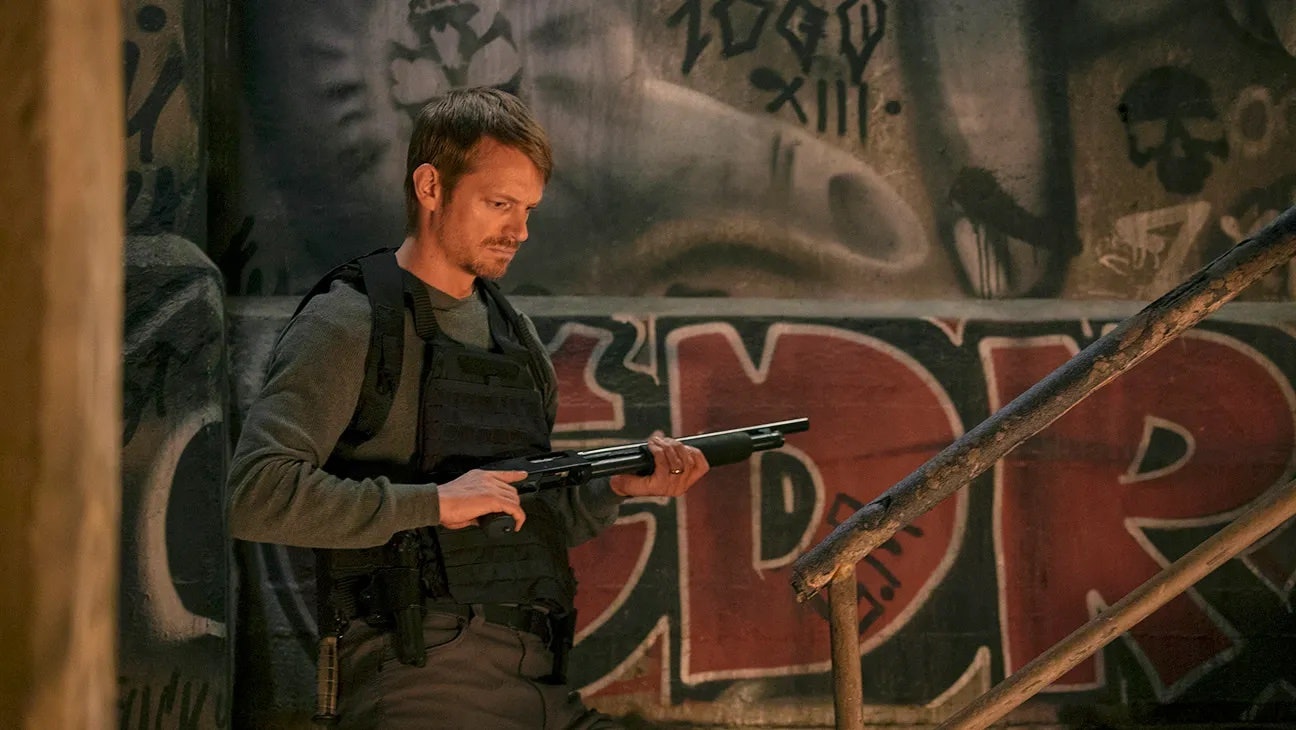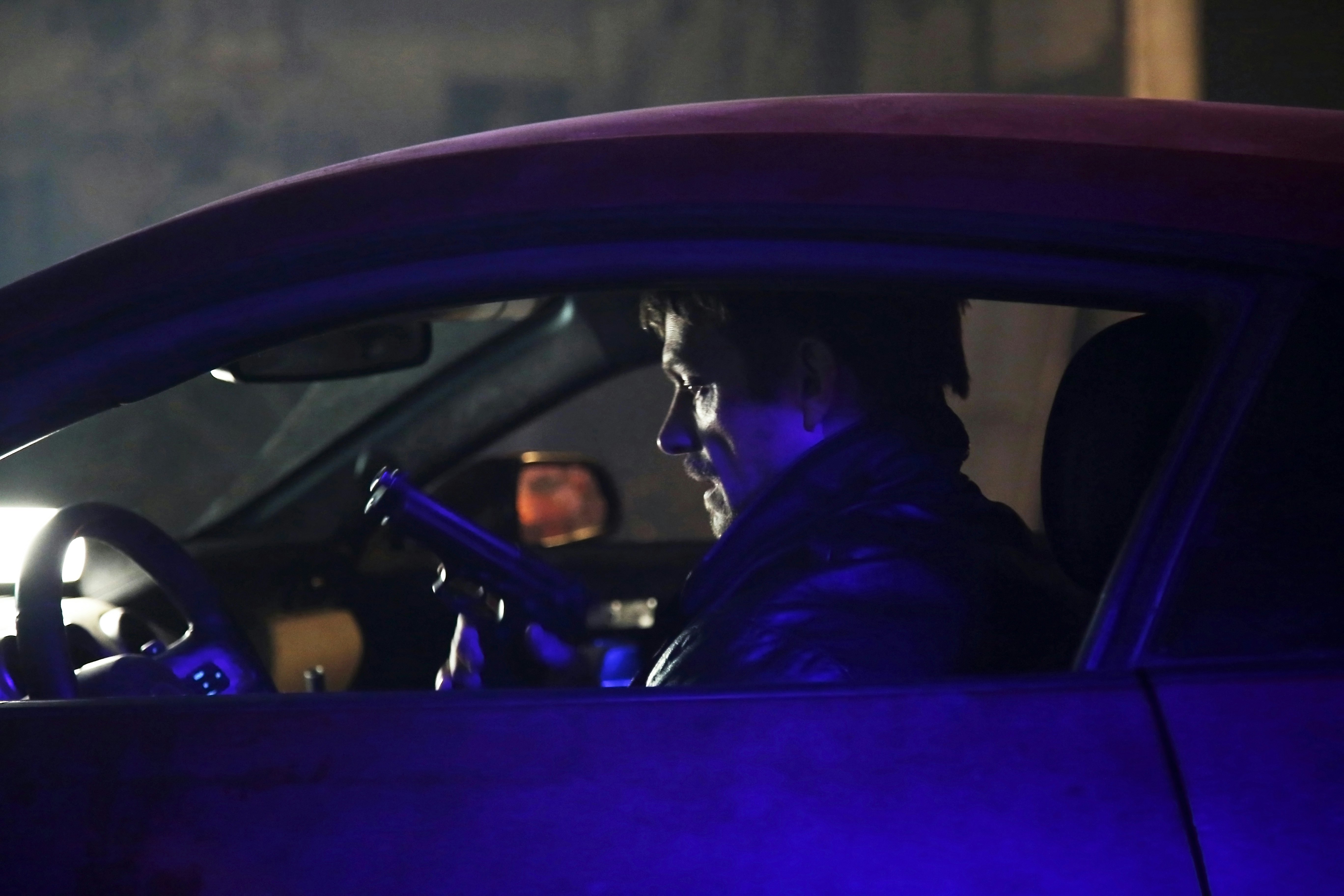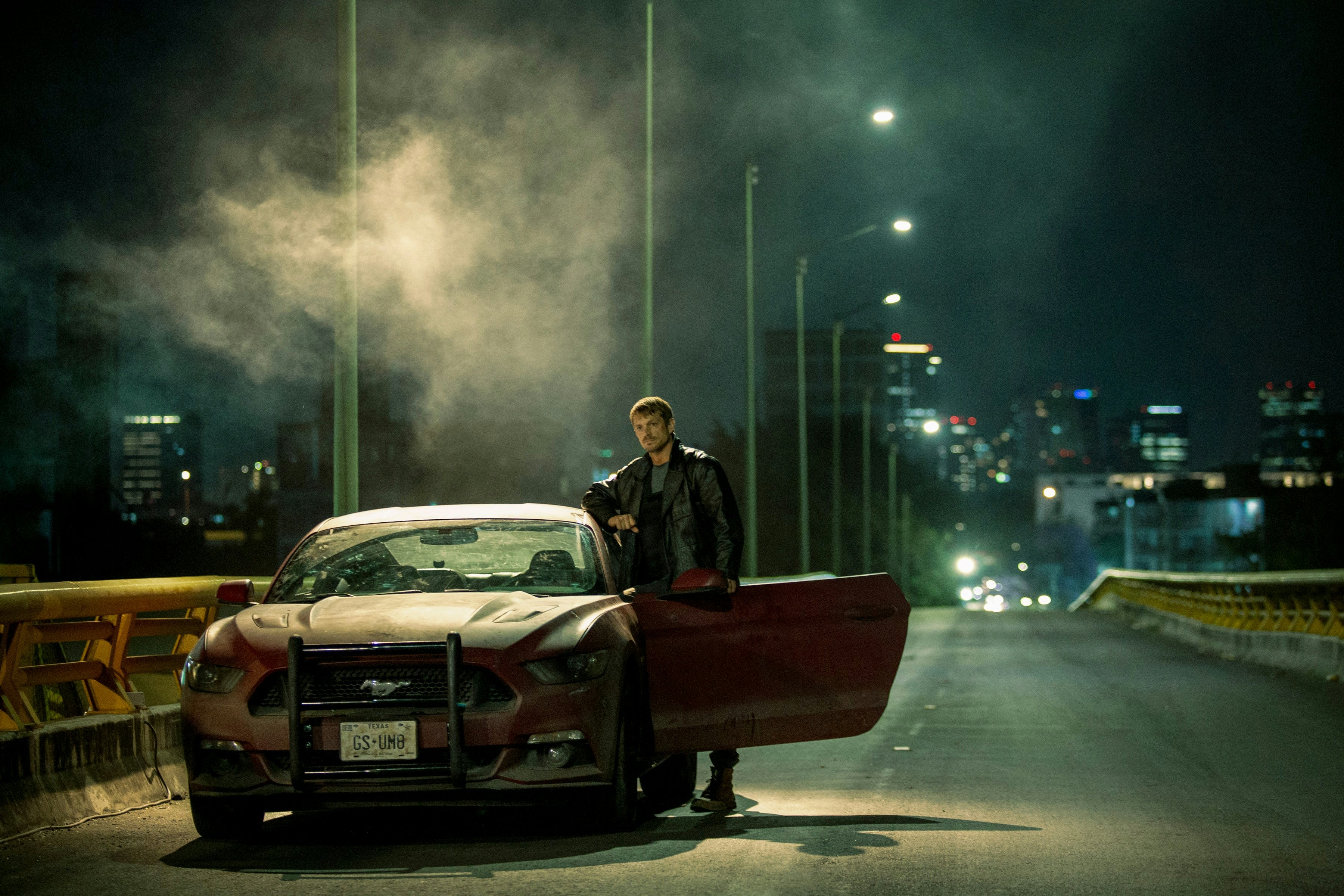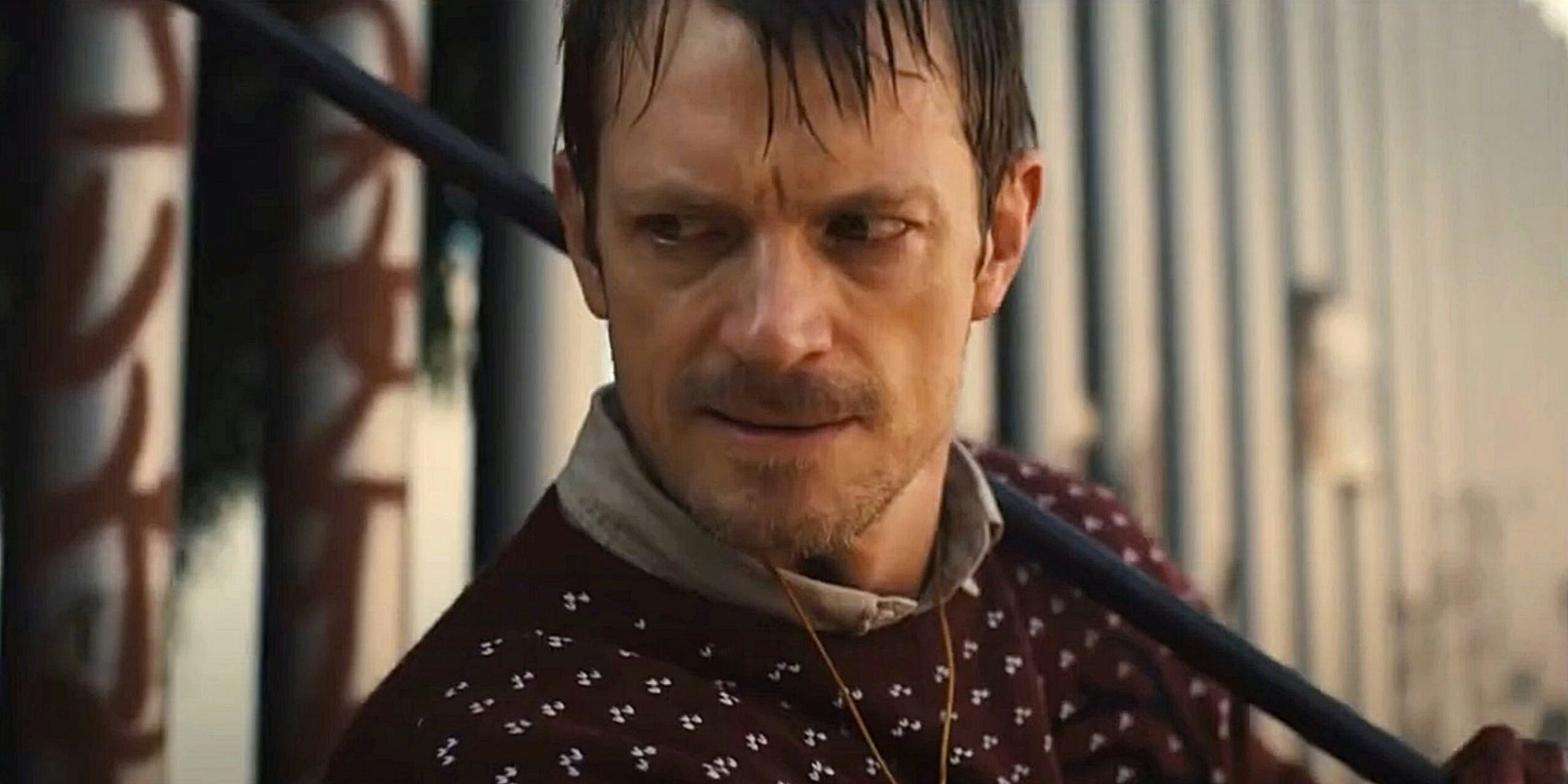
Joel Kinnaman isn’t keeping quiet over whether his latest film, Silent Night, is actually a Christmas movie. “This is a Christmas movie!” Kinnaman affirms to Inverse via Zoom. He quickly adds over laughter, “I’m wearing a Christmas sweater [in it], for God’s sake.”
In the tradition of holiday-themed action movies like Die Hard, Lethal Weapon, and even Iron Man 3, the new R-rated revenge thriller Silent Night upends all expectations of what a jolly good time at the movies should look like. From revered auteur John Woo, Silent Night follows a family man named Brian (Kinnaman) whose idyllic life is horribly disrupted when he loses his son, and his voice, to a gang shootout on Christmas. A year later, Brian wages a one-man crusade against the gangs to give them a Christmas they’ll never forget.
“I had to really prep, emotionally, for every take. I was acting like a psycho on set, screaming, kicking things around.”
Taking its Christmas-themed title quite literally, Silent Night is entirely without dialogue (save for the diegetic sounds of an FM deejay or police radio chatter). This presented a challenge to veteran actor Joel Kinnaman, known for television shows like The Killing, Altered Carbon, For All Mankind, and DC’s cinematic Suicide Squad franchise. “For me it was a big deal,” Kinnaman says on the unique demands of his nonverbal lead role. “I understood immediately, that if you take out one element, the other elements are gonna be that much more important. And I realized it’s going to be a lot more work [than usual].”

Kinnaman tells Inverse his background in Swedish theater provided him with a working basis for Silent Night, reinforcing his old habits of communicating even the tiniest feelings through big, physical movement. From his time spent starring in plentiful action movies, Kinnaman admits how much actors can actually “hide behind the dialogue.”
For Kinnaman, Silent Night was different from a typical action-oriented project. “Here I had to really prep, emotionally, for every take. I was acting like a psycho on set, screaming, kicking things around. I broke a lot of chairs shooting this movie.”
More noteworthy than Silent Night’s nonverbal script is who’s behind the camera: John Woo, a giant of action cinema renowned for his operatic visual style. Originally from Hong Kong, Woo’s tenure as a director in Hollywood resulted in peak ‘90s gems like Hard Target, Face/Off, and Mission: Impossible 2. Until Silent Night, his last American film was the critically-reviled Paycheck, a convoluted sci-fi starring Ben Affleck released in 2003.
“It made me understand, when it comes to visual storytelling, there are levels to this game. It was very cool to spend some time at the master level.”
Woo’s films are famously characterized by several recurring motifs. These include abundant slow-motion action, an unrealistic use of firearms, complex choreography filmed over a single take, and snow-white doves, a personal symbol of Woo’s representing purity (to contrast with his morally gray anti-heroes in the same frame).
Silent Night boasts all of Woo’s trademarks in spades, and in concert with its lean dialogue-free script (from writer Robert Archer Lynn), Silent Night is a distillation of — and for anyone who missed out on his work before, an introduction to — Woo’s virtuosity.
With Woo at the helm, Kinnaman only knew so much about what he was getting into. “I knew he was a legend,” he says, acknowledging his director’s mythic reputation. (He also cites Face/Off as a piece that left “a big impression.”) In their time together, Kinnaman saw firsthand the director’s approach to his craft as a foremost visualist. “Instead of filming the person talking and having to cut to the people listening, he could just design one beautiful shot that tells the story,” he says. “That’s why this film is unique. It has that visual poetry he created, and really hard-boiled intense action.”

Kinnaman cites an example of on-set collaboration that allowed him to participate in Woo’s genius. Early in the movie, Kinnaman enters the bedroom of his character’s deceased son for the first time. “Me and John had this beautiful collaboration on that scene where John designed a great shot, a really cool idea of him walking in while seeing flashbacks,” says. “There was this light change when he went into the memory.”
The actor had a suggestion — to lay on his son’s bed — to which Woo was receptive, incorporating it into the shot. “I was immediately drawn to the bed,” Kinnaman explains. “Any parent has such a relationship to their kid’s bed. This is where they put them to sleep, or fall asleep next to their kid. If that unimaginable tragedy happens, it’s going to be a very loaded place. I proposed that we have a flashback here, with his son in the bed.” Over Zoom, Kinnaman briefly (and admittedly, impressively) imitates John Woo, with the director telling him, “Hmm, good idea.”
“And then he went and designed the most incredible scene where we created a flashback without cutting,” he says. “I thought that was both emotional but also cinematically beautiful. I think we got it in on the 12th take.”
“This film is a tragedy. On this path to revenge, he loses his humanity.”
Through the eyes of John Woo, a world without words means an action movie’s symphony of carnage: of metal crashing, and bones breaking, and bullets ricocheting. Such a world is practically a playground for John Woo, a filmmaker whose movies are almost never remembered for what their characters say but how their characters think, feel, and act — and kill.
“I learned a lot more about visual storytelling [from] watching John and seeing how you can tell the story by moving the camera in a certain way,” muses Kinnaman. “It made me understand, when it comes to visual storytelling, there are levels to this game. It was very cool to spend some time at the master level.”

Kinnaman sees now why a “silent” Christmas thriller was the ideal vehicle for John Woo’s anticipated Hollywood comeback. “For the most part this film is high-octane, intense, a lot of action in it. But there’s this drama of a family dealing with the loss of this child. Because we’re doing that with no dialogue, I understood why John was drawn.”
The dialogue-less approach of Silent Night may seem like a movie-making gimmick to some, but it’s part of the emotional core of the film to Kinnaman. Brian is isolated and disconnected, until he puts himself on that path for revenge. “The only thing he can connect to is making the people that took the light of his life away pay for it,” Kinnaman says. “This film is a tragedy. On this path to revenge, he loses his humanity.”
Hence, the silence. “It has to do with his disconnect,” Kinnaman explains. “He cannot reconnect, and he cannot communicate, so the world has nothing more to say to him.”







